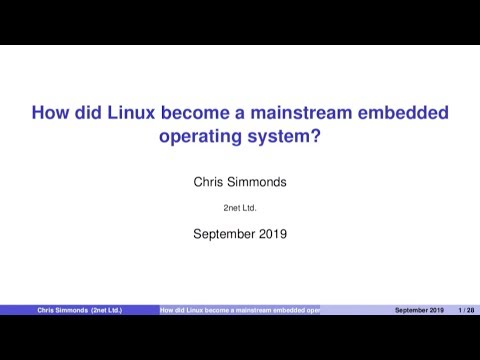Description:
Explore the evolution of Linux from a desktop operating system to a versatile embedded system in this 43-minute conference talk. Trace the journey of Linux as it adapted to control devices of all sizes, becoming smaller and more portable. Learn about the development of essential tools like Buildroot, OpenEmbedded, and the Yocto Project that facilitated Linux's transformation. Discover how individuals and small groups influenced the direction and capabilities of Linux, shaping its role in embedded computing. Gain insights into key milestones, including the Linux Router Project, flash memory support, and the impact of professional contributions. Examine the emergence of sub-kernels, native real-time capabilities, and Linux's expansion into automotive applications. Understand the significance of Linux in modern technology and its potential future in the expanding landscape of embedded computing.

How Did Linux Become a Mainstream Embedded Operating System
Add to list
#Conference Talks
#NDC Conferences
#Engineering
#Electrical Engineering
#Embedded Systems
#Computer Science
#Information Technology
#Linux
#Yocto Project
#Computer Hardware
#Flash Memory
#Buildroot
#OpenEmbedded